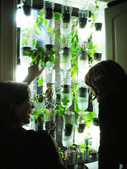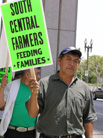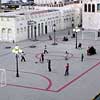cities
MayDay Posters
“What does International Workers’ Day mean for the self-employed — for the designer or any other highly flexible working person today? Or someone unemployed? How does someone self-employed go on strike? How do you fight for better working conditions?”
In much of the globe, workers of the world celebrate the first of May with demonstrations, parades, and parties led by community groups, unions, and left wing political organizations.
Once a celebration of Spring and a commemoration of attacks on workers, EuroMayDay is a modern reinvention of the May Day tradition. The first MayDay Parade was held in Milan in 2001 and has since spread across Europe. In 2006, it grew into EuroMayday, a day of protests and actions to fight “precarization” of workers and discrimination against migrants in Europe and beyond. New forms of Precarity are a result of shifts in the modern workplace from permanent employment to temp work, freelance, and other instruments of “flexible labor.” This has resulted in an existence for workers without predictability or security, affecting both material and psychological welfare.
Hundreds of activists and volunteers over the years have come together to organize the MayDay events. Since 2007, the design studio bildwechsel / image-shift has joined them, producing a series of beautiful and provocative MayDay posters. To celebrate MayDay (and the anniversary of this blog) I asked the studio partners about their MayDay poster designs from the last 4 years.
Update 5/25/10: BLGDBLOG has more on fake storefronts and dummy houses in Paris, London, and Brooklyn.

 A new pedestrian wayfinding system to help people walk around the Capital. See also:
Bristol Legible City, Southampton Legible City, Legible Dublin, and Connect Sheffield
A new pedestrian wayfinding system to help people walk around the Capital. See also:
Bristol Legible City, Southampton Legible City, Legible Dublin, and Connect SheffieldNeo Gardenism
At the intersection of urbanism, DIY, food justice and sustainable agriculture, a crop of artists are making open source gardens and sharing instructions on the web and beyond.
 Britta Riley and Rebecca Bray build hydroponic Window Farms from recycled materials. The farms are specifically designed with New York City apartments in mind, and the website invites window gardeners to share photos, plans, designs and information.
Britta Riley and Rebecca Bray build hydroponic Window Farms from recycled materials. The farms are specifically designed with New York City apartments in mind, and the website invites window gardeners to share photos, plans, designs and information.
Edible Estates is a project to convert the classic American front lawn into a productive vegetable garden. Initiated by architect and artist Fritz Haeg on Independence Day, 2005, several prototype gardens were created in different cities across the United States, with instructions and documentation of the prototype gardens posted to the site. 2009 sites have not been announced, but the group is ideally looking for “A monotonous housing development of identical homes... where the interruption of the endless lawn would be dramatic and controversial.”
The Future Farmers’ Victory Gardens project is fought on two fronts: to deliver urban garden kits to urban farmers across San Francisco, and to ultimately develop and maintain a portion of the original Victory Garden space in San Francisco’s Golden Gate Park.
 The Garden is a feature-length documentary film about a 14-acre community garden in South Central Los Angeles that emerged in the wake of the 1992 LA riots. The film chronicles the origins of the plot and the South Central Farmers struggle to prevent it from being demolished.
The Garden is a feature-length documentary film about a 14-acre community garden in South Central Los Angeles that emerged in the wake of the 1992 LA riots. The film chronicles the origins of the plot and the South Central Farmers struggle to prevent it from being demolished.
On the more underground tip, Guerilla Gardening is illicit, nocturnal gardening in a space not your own. guerrillagardening.org lists projects, mostly in London, each with a description, location, photos, and budget. The site includes tips for making your own.

Seed bombing is packing seeds in compressed soil and throwing it into inhospitable or hard to reach places. Artist Liz Christy was the first to use the term in 1973 when she fought urban decay by tossing seed grenades full of sunflower seeds into abandoned New York City lots. Here’s a scan of her original instruction sheet. Christy also co-founded the first community garden in New York City.
 Moss graffiti is also good for damp, urban corners. Anna Garforth has done some beautiful work here. Here’s how to make your own.
Moss graffiti is also good for damp, urban corners. Anna Garforth has done some beautiful work here. Here’s how to make your own.
And onto Gardening 2.0: Landshare is a UK website matching people who want to grown their own food with homeowners with underused space. The site also hosts an active forum for sharing tips and answering questions.
And with your veggies in hand, VeggieTrader is a website for trade, buy or sell homegrown produce.
I’m sure there are many more sites and projects, too. Between the recession and growing concern about industrial food systems, there seems to be something of a renaissance going on here.
 Curated by the Canadian Centre for Architecture, a list of 99 creative, public interventions for civic improvement. See, for instance, Illicit Stencil Saves Cyclists and Reclaim Vacant Lot with What City’s Got. ( via ag, gi)
Curated by the Canadian Centre for Architecture, a list of 99 creative, public interventions for civic improvement. See, for instance, Illicit Stencil Saves Cyclists and Reclaim Vacant Lot with What City’s Got. ( via ag, gi)
It’s not just rising costs or a lack of funds: “Infrastructure repairs simply aren’t as sexy as ribbon-cuttings. The public and politicians are more likely to support new construction, leaving existing structures wanting.”
page 2 1

